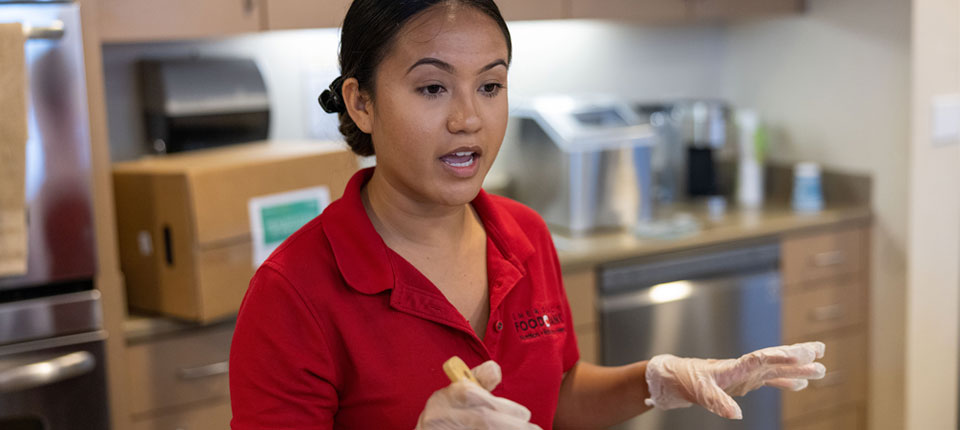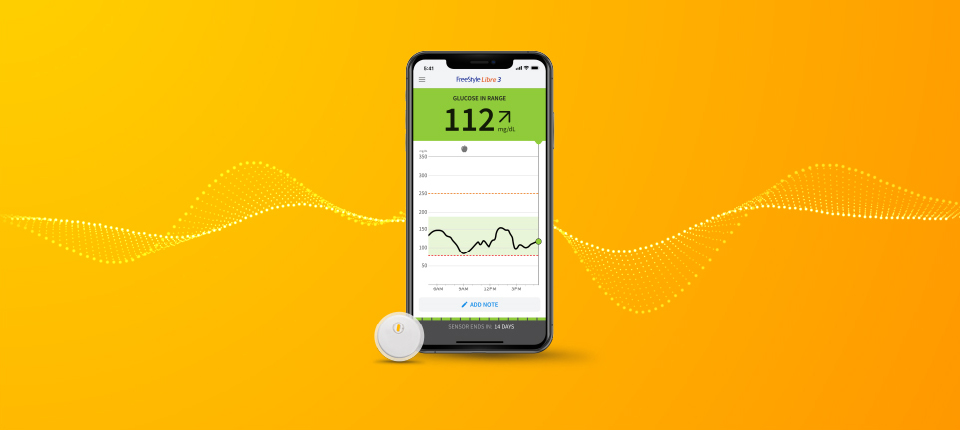Kathleen Jones, a community health worker who provides diabetes education to her clients in Stockton.
How Healthy Food Delivery Connected to Better Habits
Stockton residents Barbara White and Arnetta Brown have felt the impact. So have hundreds of others like them who have been a part of our Healthy Food Rx program in partnership with Public Health Institute, Community Medical Centers, and the Emergency Food Bank of Stockton.
We based the program on a pretty simple premise: It’s extremely tough to make healthy choices if healthy foods aren’t really available to you. Healthy Food Rx delivers a box of fresh produce, lean meats and pantry items directly to people’s homes twice a month.
Many people are referred to the program from the community diabetes clinics because the demand for nutritious foods — and education about what goes into a healthy diet — is so high.
“A lot of patients ask, ‘Why don’t you give me examples of what to eat?’ or ask a doctor, ‘Why don’t you give me a list of what to eat?’ Well, this is doing exactly what they always asked for,” says Cecilia Lopez Perez, a health educator with Community Medical Centers who has been working with White to help her manage her diabetes.
Results have been eye-opening. People with uncontrolled diabetes who participated in Healthy Food Rx saw a decrease in their HbA1c (a number representing the glucose level in their blood) — by a statistically significant average of 0.8%.
Nutrition educators at the food bank build each box around recipes that are developed with guidance from the California-based Public Health Institute Center for Wellness and Nutrition.
“Essentially, we have a list of foods in our mind — what might be good, what’s in season, what’s low on the glycemic index, what’s high in protein,” says Alex Marapao, one of the nutrition educators (and also an Abbott Fund scholar earning her master of science in nursing from the University of the Pacific).
“We ask ourselves, ‘What recipe will they enjoy?’ And, above all, what’s culturally appropriate? We try to make 50%-75% of the food ... fresh fruits and vegetables.”
And, whenever there’s an opportunity, they’ll introduce something not just fresh but new. Arnetta Brown, the Healthy Food Rx participant, lights up with laughter recalling the first time she encountered plant-based sausage.
“I gave the first one to my dog,” she says. “But I felt guilty, so then I tasted it. And it tasted pretty good. I liked it. Now the dogs know — they’re not getting it.”
Over the course of the rest of the conversation, Brown rattled off glucose numbers that were impressively in-range, showing her progress in managing her diabetes. But statistics are just one measure of success. Others show up on a more personal level.
“You need encouragement. When stress hits you — unforeseen circumstances — you’ll be surprised at what you do,” White says. “And you need that way to come together.”
With support, with encouragement, the journey to better health becomes an easier one to make. In fact, some of the biggest strides White took during Healthy Food Rx were ones she didn’t even notice at first.
“I noticed I was getting smaller ... I was eating healthy and eating less,” White says.
“So I asked my doctor, ‘Can I weigh myself?’ I had lost 10 pounds — and (it felt like) I didn’t even try. That’s when it hit me: ‘You must’ve been good.’ ”






FOLLOW ABBOTT